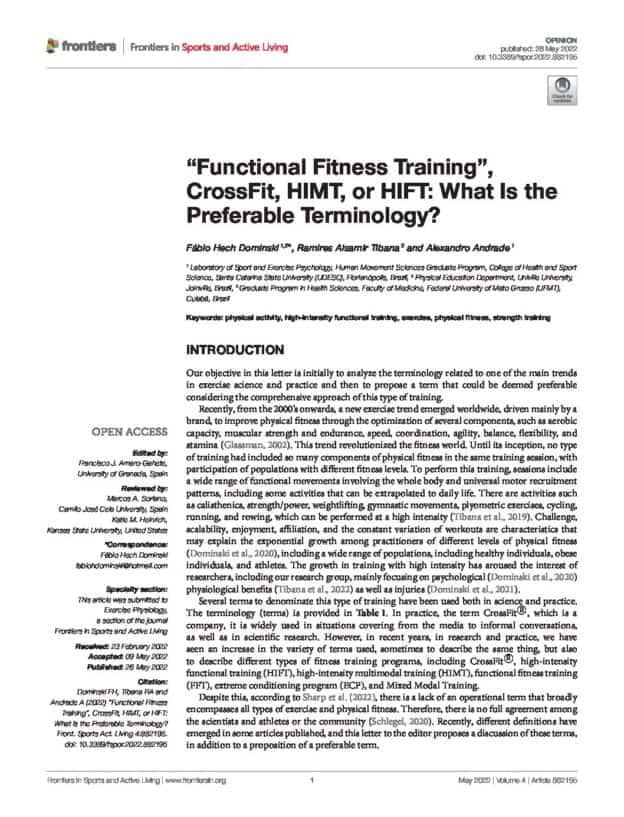Abstract
Our objective in this letter is initially to analyze the terminology related to one of the main trends in exercise science and practice and then to propose a term that could be deemed preferable considering the comprehensive approach of this type of training.
Recently, from the 2000’s onwards, a new exercise trend emerged worldwide, driven mainly by a brand, to improve physical fitness through the optimization of several components, such as aerobic capacity, muscular strength and endurance, speed, coordination, agility, balance, flexibility, and stamina (Glassman, 2002). This trend revolutionized the fitness world. Until its inception, no type of training had included so many components of physical fitness in the same training session, with participation of populations with different fitness levels.
To perform this training, sessions include a wide range of functional movements involving the whole body and universal motor recruitment patterns, including some activities that can be extrapolated to daily life. There are activities such as calisthenics, strength/power, weightlifting, gymnastic movements, plyometric exercises, cycling, running, and rowing, which can be performed at a high intensity (Tibana et al., 2019).
Challenge, scalability, enjoyment, affiliation, and the constant variation of workouts are characteristics that may explain the exponential growth among practitioners of different levels of physical fitness (Dominski et al., 2020), including a wide range of populations, including healthy individuals, obese individuals, and athletes. The growth in training with high intensity has aroused the interest of researchers, including our research group, mainly focusing on psychological (Dominski et al., 2020) physiological benefits (Tibana et al., 2022) as well as injuries (Dominski et al., 2021).
Several terms to denominate this type of training have been used both in science and practice. The terminology (terms) is provided in Table 1. In practice, the term CrossFit®, which is a company, it is widely used in situations covering from the media to informal conversations, as well as in scientific research. However, in recent years, in research and practice, we have seen an increase in the variety of terms used, sometimes to describe the same thing, but also to describe different types of fitness training programs, including CrossFit®, high-intensity functional training (HIFT), high-intensity multimodal training (HIMT), functional fitness training (FFT), extreme conditioning program (ECP), and Mixed Modal Training.
Despite this, according to Sharp et al. (2022), there is a lack of an operational term that broadly encompasses all types of exercise and physical fitness. Therefore, there is no full agreement among the scientists and athletes or the community (Schlegel, 2020). Recently, different definitions have emerged in some articles published, and this letter to the editor proposes a discussion of these terms, in addition to a proposition of a preferable term.



Responses